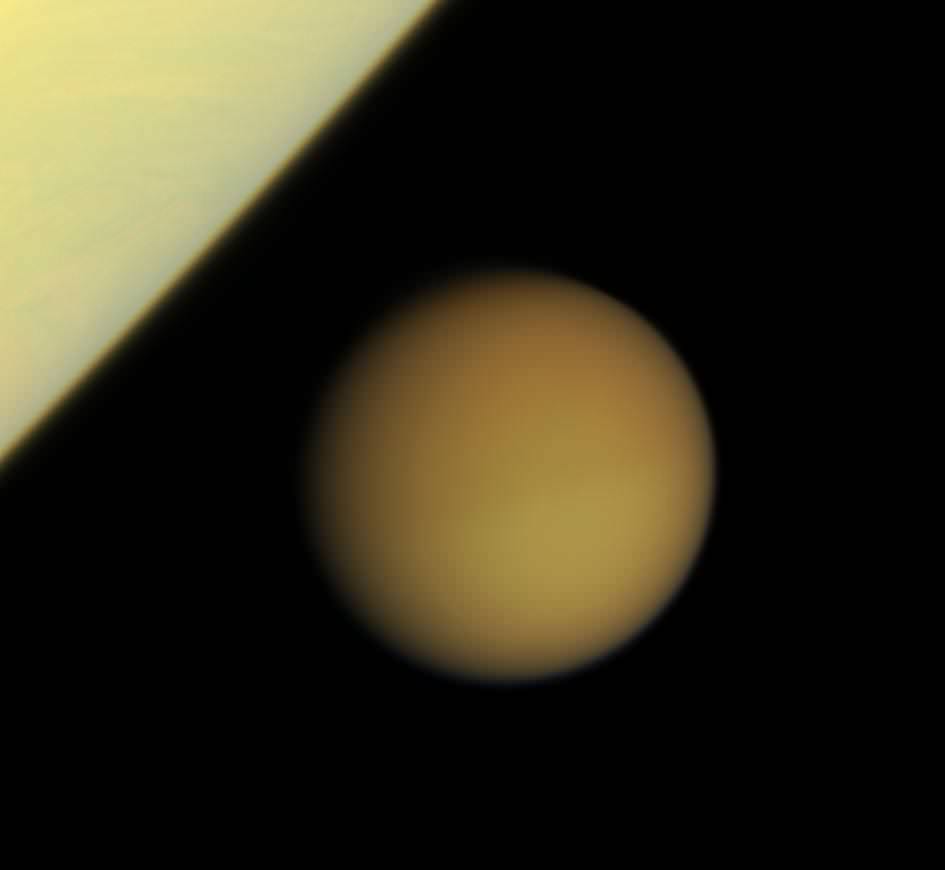The largest moon of Saturn is Titan, measuring 5,150 km across. In fact, Titan is the second largest moon in the Solar System, after Jupiter’s Ganymede. Titan is so big that it’s even larger than planet Mercury, which is only 4,879 km across. And it’s much bigger than the Earth’s moon at 3,474 km.
Astronomers used to think that Titan was actually the largest moon in the Solar System, but when NASA’s Voyager spacecraft first arrived at the moon in the 1980s, they were able to make detailed observations of the moon at its atmosphere. They proved that Titan’s atmosphere extended out for dozens of kilometers, and so the physical moon itself was actually smaller than previously thought, making it smaller than Ganymede.
Titan orbits Saturn at an average distance of 1,221,870 km, completing an orbit every 15.945 days. It’s tidally locked to Saturn, so it always presents the same face to Saturn. So a day on Saturn is also the same amount of time it takes to orbit Saturn.
Titan is the only moon in the Solar System known to have a thick atmosphere. In fact, the pressure of the atmosphere on the surface of Saturn is 1.5 times greater than the atmospheric pressure here on Earth. Of course, the atmosphere of Titan is almost entirely nitrogen, and the temperature is -179° C. So it wouldn’t be a comfortable place to visit without a spacesuit.
We’ve written many articles about Titan for Universe Today. Here’s an article about seasonal changes on Titan, and here’s an article about how Titan’s haze acts like an ozone layer.
If you’d like more info on Titan, check out Hubblesite’s News Releases about Saturn. And here’s a link to the homepage of NASA’s Cassini spacecraft, which is orbiting Saturn.
We’ve also recorded an episode of Astronomy Cast just about Saturn’s moons. Listen here, Episode 61: Saturn’s Moons.

